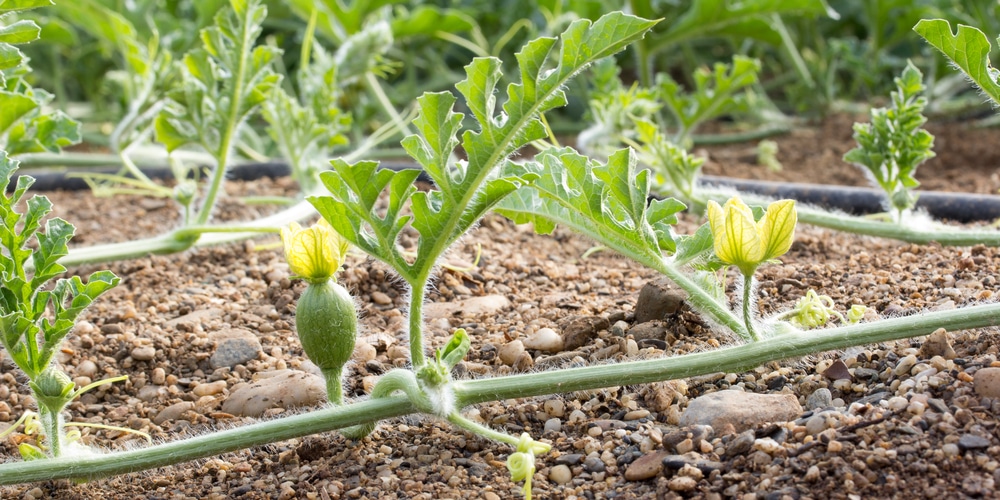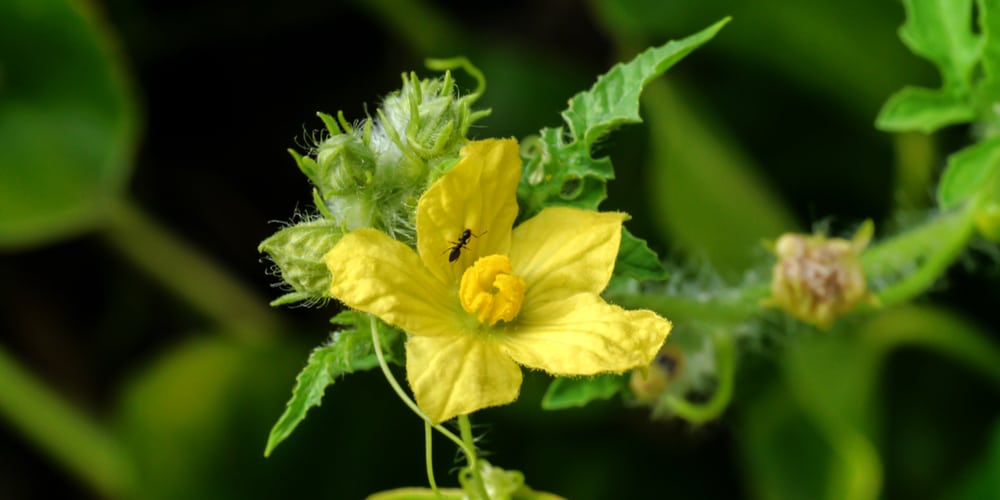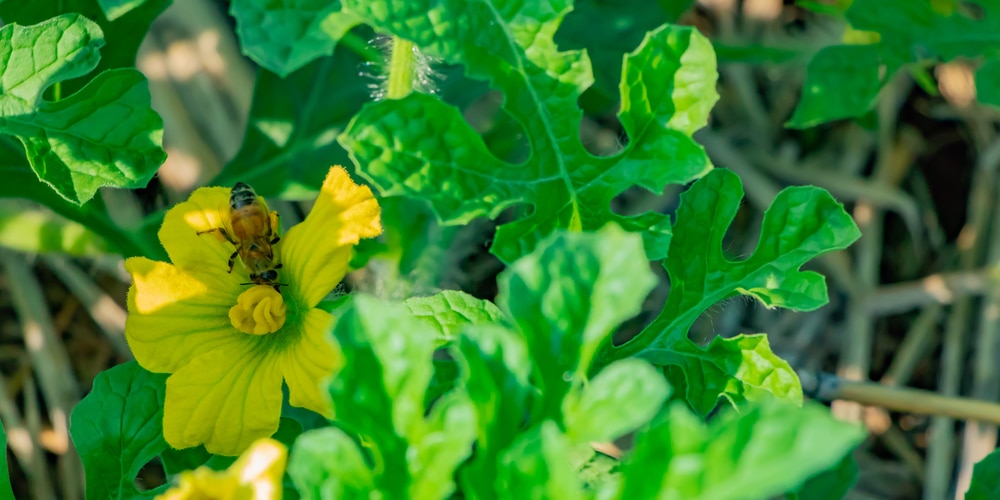Many people think that watermelon plants are either male or female. In fact, it’s the flower blossoms that are referred to as male or female, and their gender affects how they are pollinated. Understanding watermelon pollination will allow you to take better care of your plant and increase your crop size. Let’s look at male vs. female watermelon flowers.
Watermelon Flowers: Male Vs. Female
Watermelon plants either produce male or female flowers. You can tell the difference between flowers reasonably quickly by looking behind the flower. Female flowers have a bulge that looks almost like a tiny watermelon. This bulge is the ovary of the flower. Once it’s been pollinated by bees or other pollinators, it will grow and become a watermelon.
When flowers first start to form on your watermelon plants, they will be male as the male flowers appear up to ten days before the female flowers. Male flowers are required for pollination, and once their job is done will drop off the plant. This is completely normal and won’t affect the plant’s crop.
Most watermelon varieties take about fifty days for the fruit to be ready for harvest from the time the first flowers appear. Keep an eye on the female flowers; you will notice that the ovary behind the flower begins to grow. Once it grows to the size of a golf ball, you can be confident that your flowers have been pollinated, and a watermelon will be produced. It will take approximately a month to six weeks before you’re able to harvest a ripe watermelon.
Do I Need Two Watermelon Plants for Pollination?
It’s a common misconception that you need two watermelon plants to pollinate each other successfully. Watermelon plants have both male and female flowers, which can pollinate each other. This is known as being monoecious, which means the plant can self-pollinate.
The male flower will pollinate the female flower even if they are on the same plant. This term means that the plants are self-fertile, which is different from other plants that are described as self-pollinating. Many plants have flowers with male and female parts in the same flower which means the plant can self-pollinate. This is not the case with watermelons, as there are two distinctively different flowers; males and females.
How are watermelons pollinated?
Bees and other garden insects can pollinate watermelons. Pollon from one flower will be transferred to another flower as the bee moves around your vegetable garden. Most commercial watermelon growers have an agreement with a nearby beekeeper, and bees are used for pollination.
A honey bee will need to visit a flower an average of eight times before its successfully pollinated. Bumblebees are larger and faster, which means they are about ten times more effective at pollinating flowers.
Conclusion
There’s no such thing as male vs. female watermelons, but a watermelon plant will produce two different flowers, which are referred to as being male and female. Both male and female flowers are needed to create a watermelon. The fruits grow behind the female flowers and take approximately fifty days to develop.
Related:


